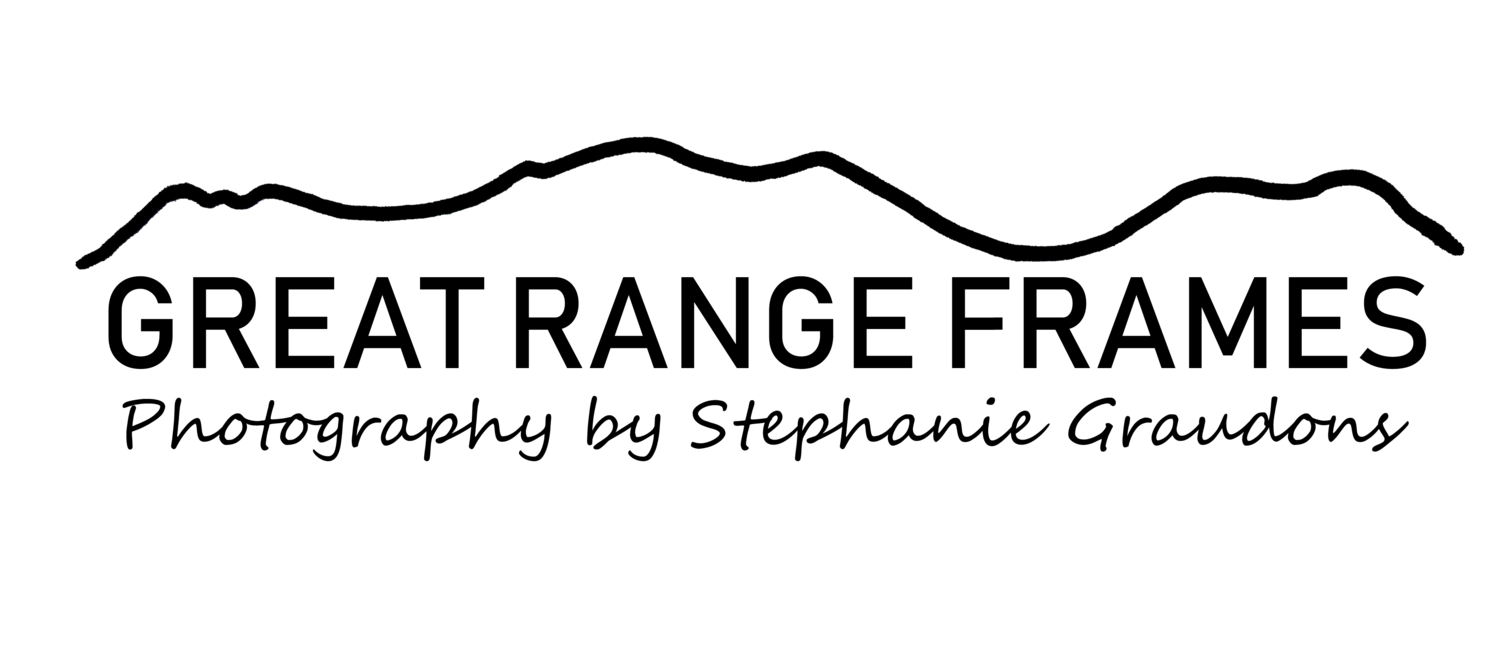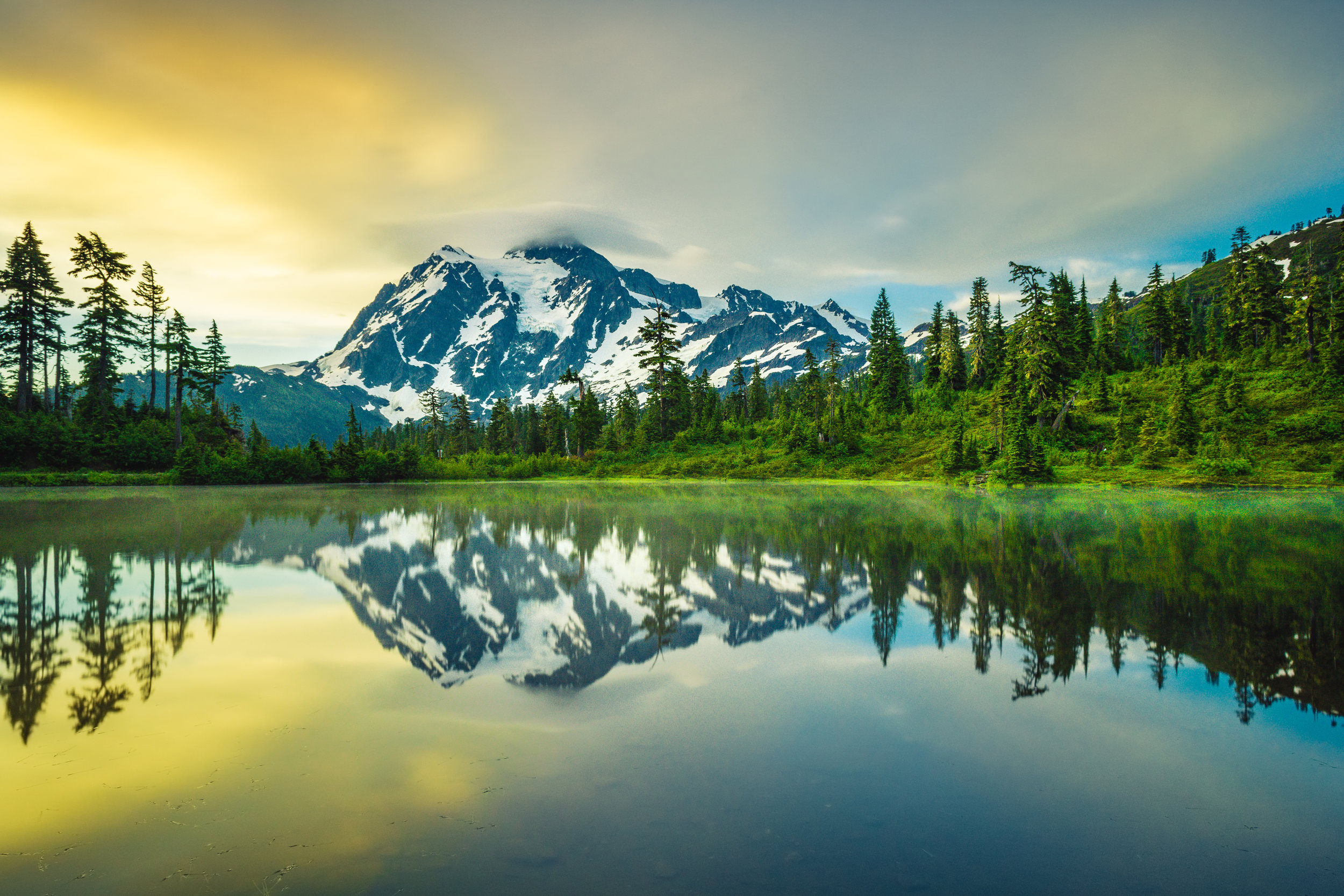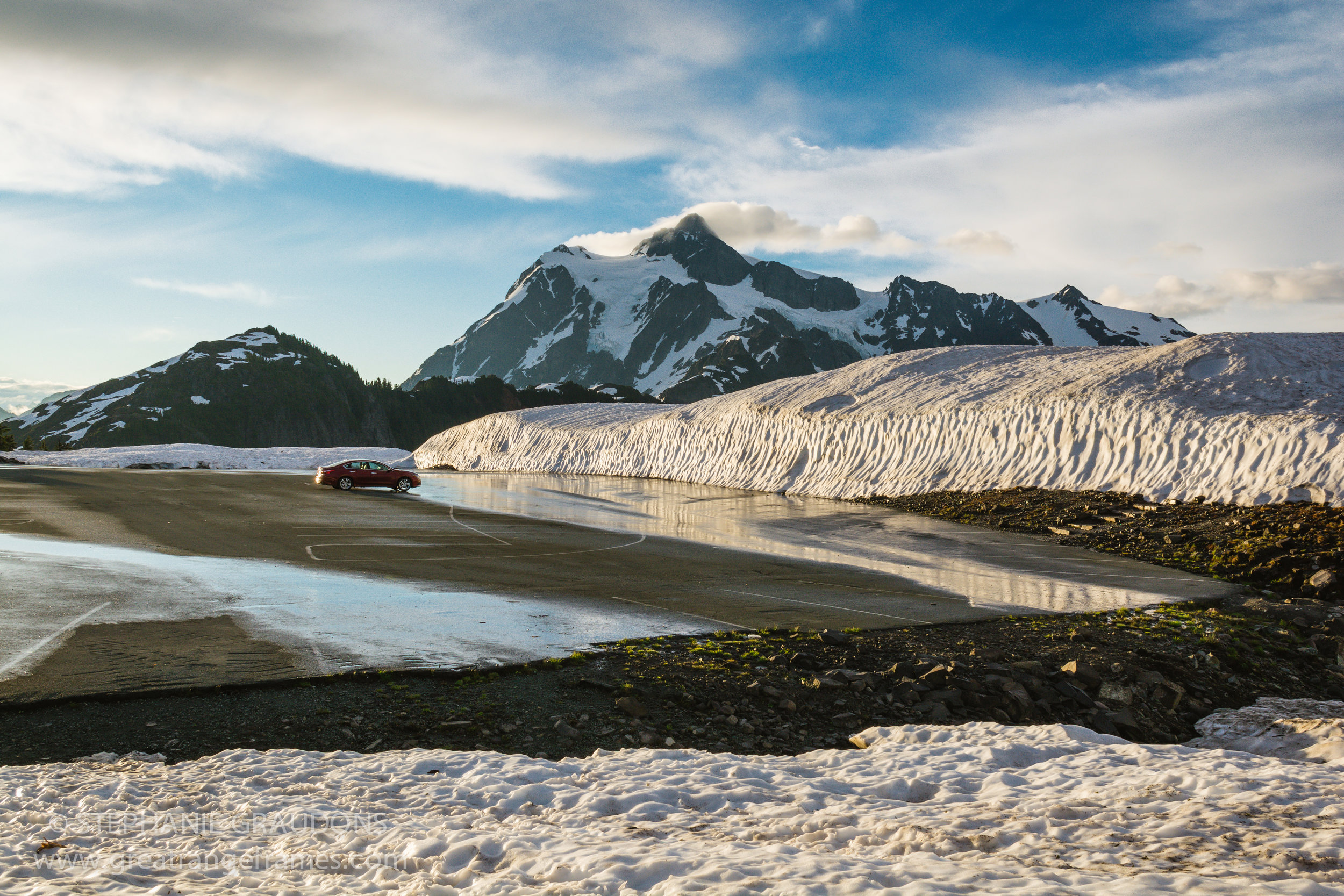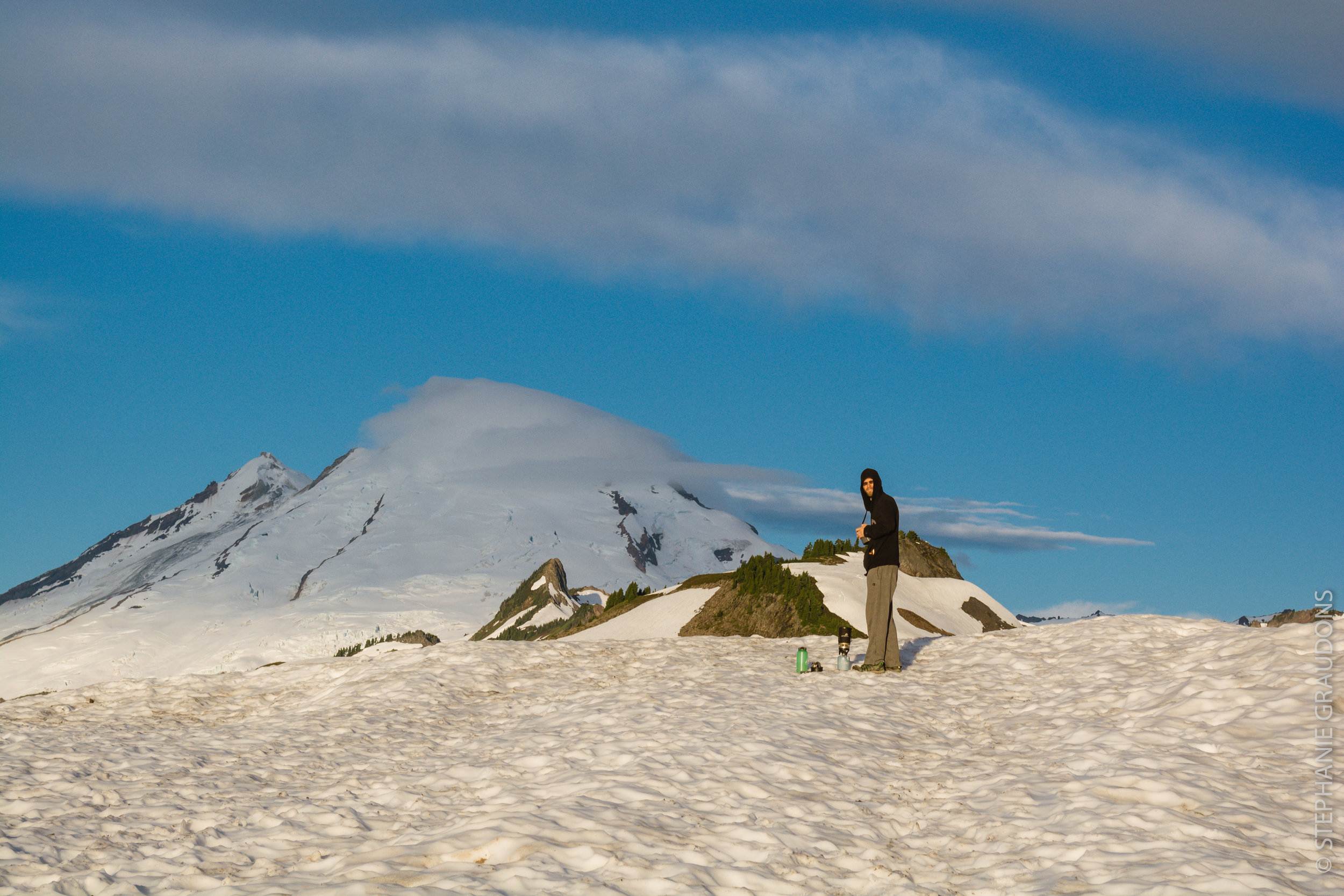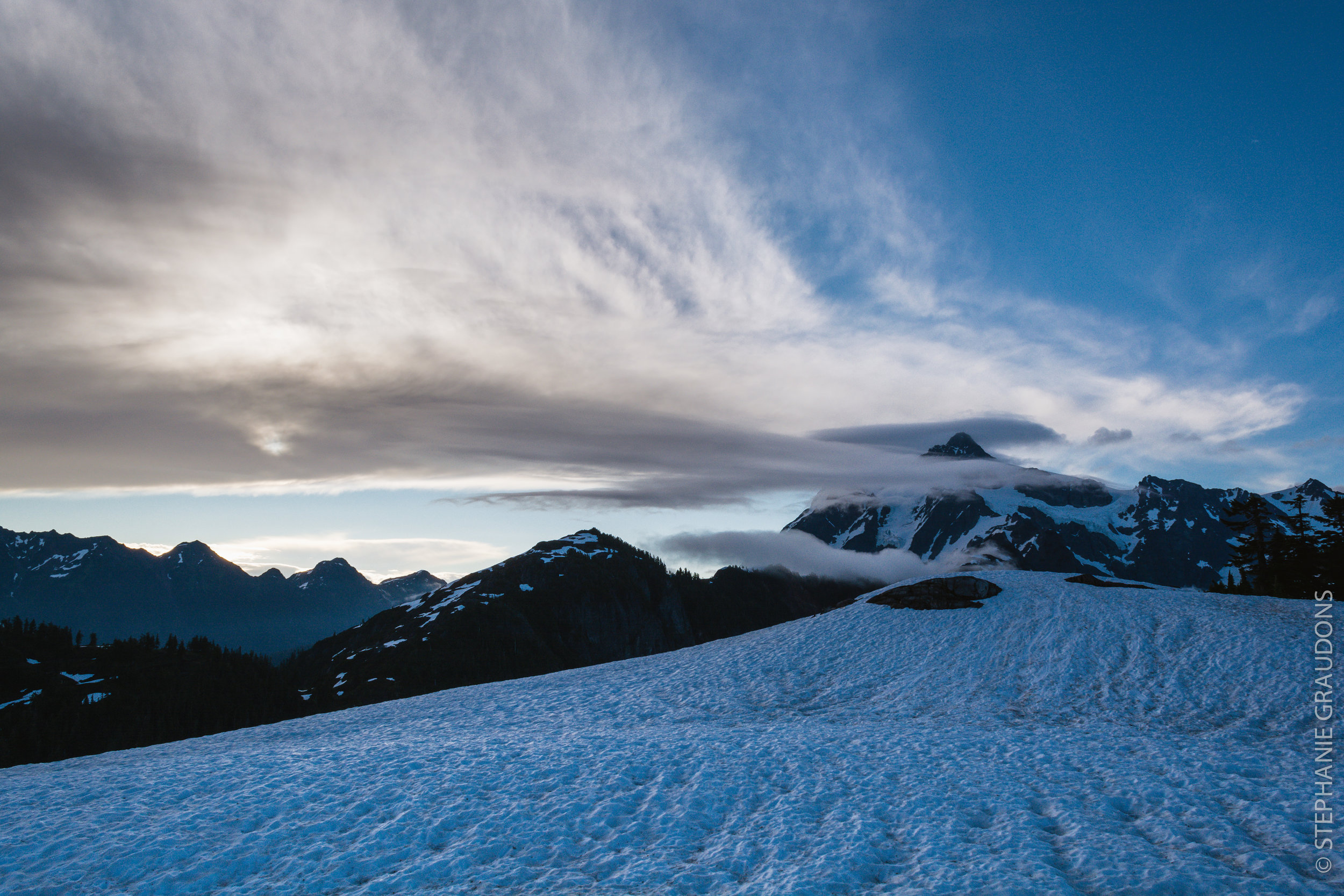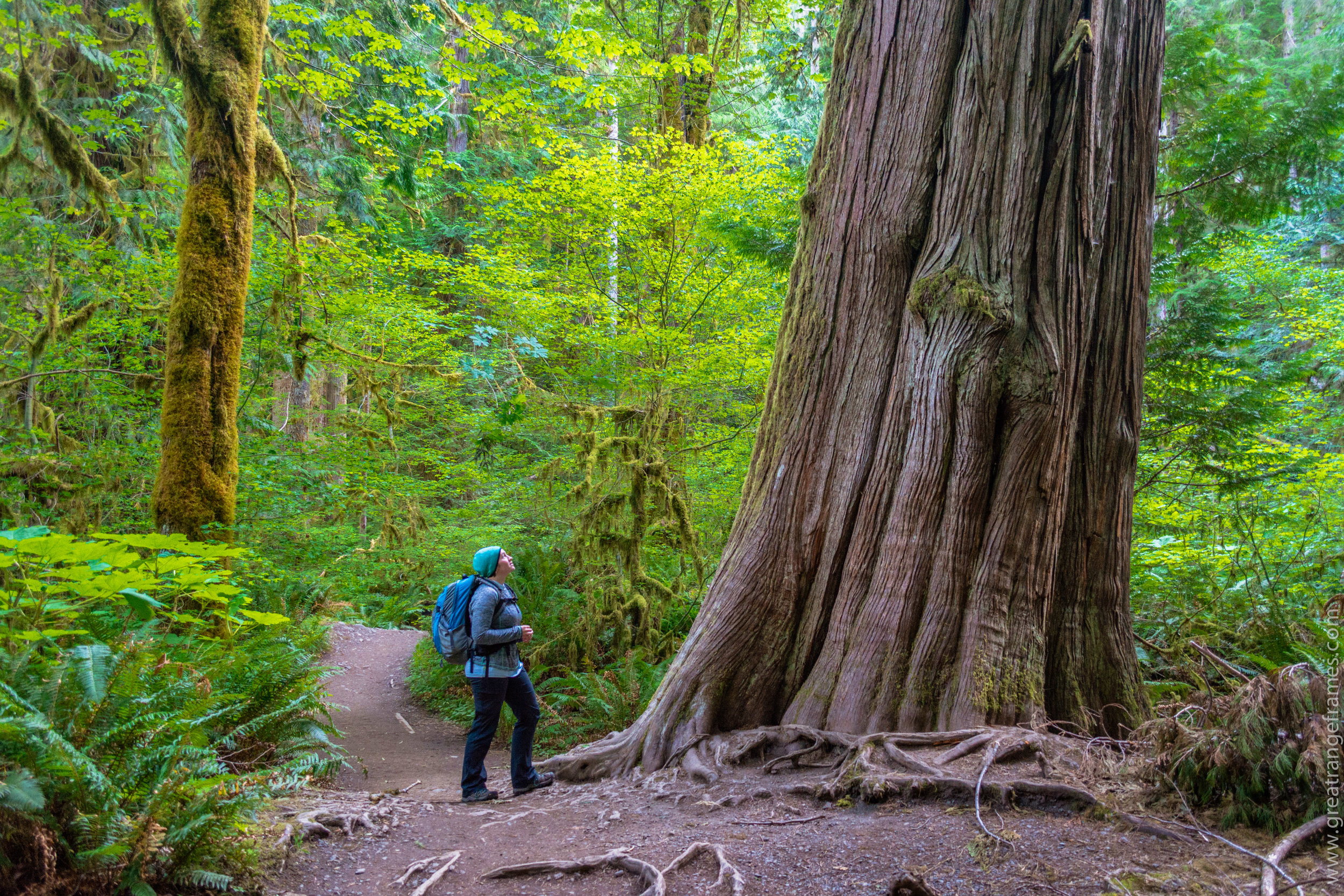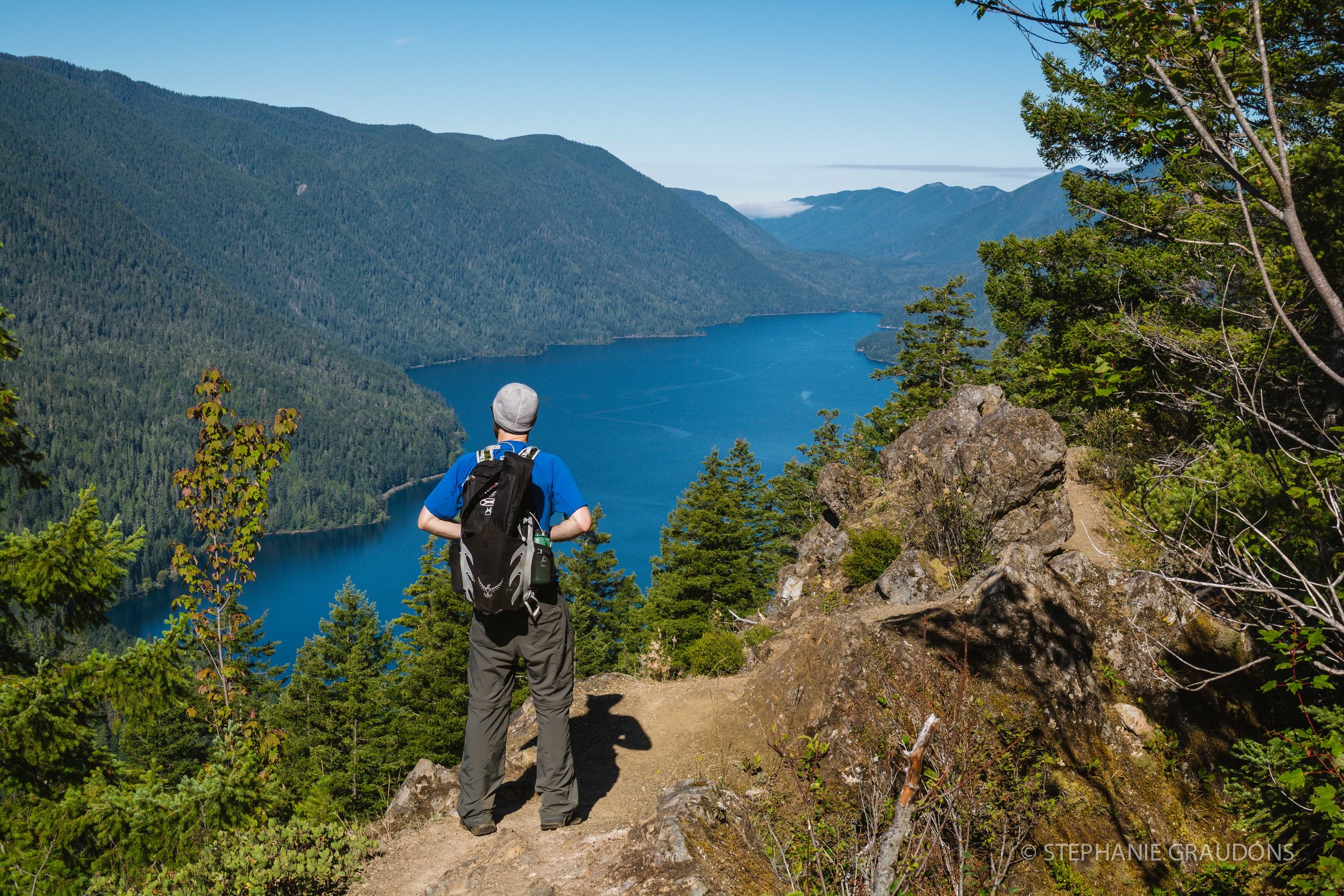It’s great being on east coast time in the Pacific Northwest. Again we’re up at 4:30am, driving up to Picture Lake to take the classic photo of the sunrise over Mount Shuksan. With weather moving in and clouds around, we weren’t sure if we’d even be able to see the mountain, but figured it was worth driving up there early just in case. We hit the perfect weather window, which allowed us calm water and a beautiful reflection of Mount Shuksan, followed by a glimpse of Mount Baker in the morning light during a revisit to Artist Point just before the clouds rolled in and shrouded it again. We wandered on the snowfield, where Ted made coffee with the Jetboil, and we headed back down to camp as the sky got darker.
Given our limited time here and our desire to see as much as we could, we headed out of the stormy weather and down toward the coast, stopping in Maple Falls for breakfast sandwiches and to top off the camera and laptop batteries. We arrived at the ferry at 11:45am, but had to wait until 2pm to sail. Ted is much more patient than I am, and I was pretty frustrated about wasting so much time sitting in a hot car in the sun for two hours. We parked in line and made the best of it by wandering around by the shore, where Ted caught tiny crabs and a jellyfish without tentacles and handed them to me. Eventually, it was time to drive onto the ferry and enjoy the cool breeze from the front of the boat. Now under a sunny, blue sky, it’s hard to believe just a few hours ago we were driving through dark clouds and rain.
We entered Olympic National Park and decided to camp at Heart O The Hills. After choosing the perfect site and putting up hammocks, we drove up to Hurricane Ridge, hoping for a mountain goat sighting. Well, we got more than we bargained for. There were deer on the sidewalks and in the parking lot, close enough to us as we tried to walk through that it made us a little uneasy. In the final stretch to Sunrise Point, we came across two mountain goats on the side of the trail, a mother and baby. They continued eating and didn’t seem to pay any mind to tourists, but it upset me to see a family with young children scarily close to the goats, with no guard for giving wildlife space. We continue up a few steps past the pair, and Ted found himself face to face with another mountain goat, standing at the top as if to guard the viewpoint. He didn’t back down or run away, instead, he started walking slowly down the trail straight at us. The ridge had a steep drop on both sides, so we couldn’t move off the trail to let him pass. The mountain goat got closer and closer and we tried to give him space, laughing nervously, and at the same time, trying to get a photo. If I’ve learned one thing about wildlife, especially when you’re close to them, they really don’t like the sound a dSLR makes when you take a photo. At least this is the case for moose and mountain goats. After a few photos, I let him pass in peace, the mountain goat walking along the steep slope a few mere feet away from us on the trail. Finally, a clear path to the top! We head up the trail, adrenaline still rushing from two close encounters, and just as we round the last corner to the viewpoint, another mountain goat pops his head up from the vegetation, scaring us, and looks straight at us. We jumped back, wondering if we’d ever get to stand at that point. We waited him out, and the goat made his way down the hillside. On the way back down to the visitor center, we encountered several more mountain goats at a safer distance, and ran into countless deer, including one buck that was too close for comfort and we walked quickly by.
At the visitor center, we set up the Jetboil and made pita pizzas for dinner, enjoying the view of mountains all around. At one point while cooking, Ted laughed, “Don’t look behind you,” which of course prompted me to immediately turn around, and startle a deer that had walked up pretty close. As we ate, we saw herds of deer move down the hillside behind us. Bucks, does, fawns, they seemed to be multiplying as we watched.
The next morning we headed further out on the peninsula, stopping at Crescent Lake to hike along the way. Marymere falls wasn’t running very high, but I enjoyed the large trees along the trail, and then we headed up to Storm King. There’s a nice trail most of the way, but the maintained portion stops below the true summit, which is where we hoped to make it to. Unfortunately, there was a steep sandy and rocky section, where we could even see a rope hanging higher up, and as I started up it, Ted felt uneasy about it. A fall would be bad, and when I leaned over part of the ridge and saw the drop on that side, I agreed I was okay with turning around. A solo hiker in sandals met us at this point, and she decided she wanted to continue up. We watched her ascend, thinking if she was able to navigate up that section, we would be more enticed to do it ourselves. She made it further than I did, but also turned around. We climbed up a bit to spot her coming down and give her a hand if she needed it. Thankfully, there are views without reaching the true summit, so we still got a great hike and views overlooking the lake anyway.
We continued on to Mora Campground, where we got the last campsite in the entire area. After setting up, we hiked on Rialto Beach out to Hole in the Wall to check out the tide pools. We watched the tide come in and sunset before settling in for the night.
Sunday morning we got up early to check out Second Beach at low tide, just after sunrise. There were countless starfish and sea anemones! I dreamed of seeing these and finally, here they were! Next stop was the Hoh Rainforest, where we hiked a few trails as the sun started to come out, and then a walk on Ruby Beach in sunshine. The beaches had been mostly cloudy or foggy the whole time, so luckily we got blue sky for our last beach walk before turning back toward the mountains.
We spent Sunday night camping at Falls Creek Campground in Quinault, where Ted swam in the lake while I read Backpacker Magazine in an Eno hammock. We hiked a nearby rain forest trail and planned Monday’s itinerary. We started Monday morning at the world’s largest Sitka Spruce. This 1,000 year old tree stands at 191 feet tall and has almost 59 feet circumference! It was a short walk to it, and definitely the largest tree I’ve seen to date. We visited Merriman Falls and drove into the Quinault Rain Forest Ranger Station, where we met David Philips, a ranger who started his career at SUNY ESF in upstate NY, where he was one of Dr. Ed Ketchledge’s students. He shared stories about how he spent summers as a camper and counselor in the Lake George region, and how Ketch had a huge impact on his life. He recalled Ketch was an intelligent and inspirational man, he hiked and talked fast, and taught things you couldn’t find in a textbook. He had not known about Ketch’s passing, but was excited to hear about his contributions to preserving the alpine ecosystems in the Adirondacks and the Summit Steward Program.
